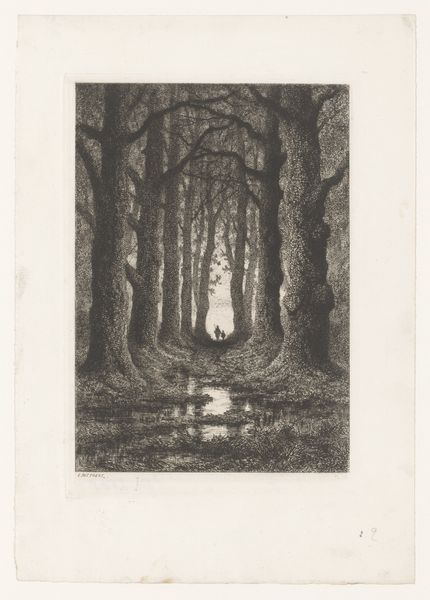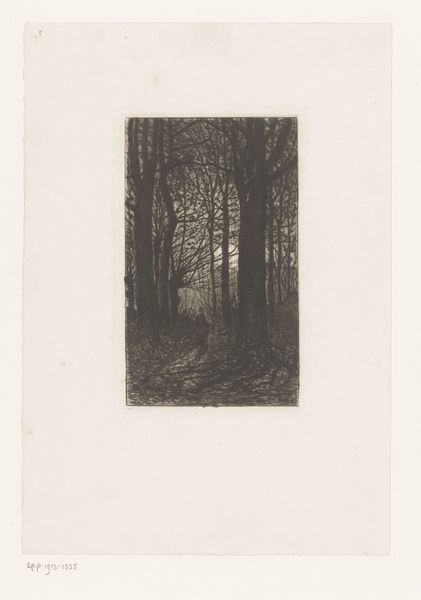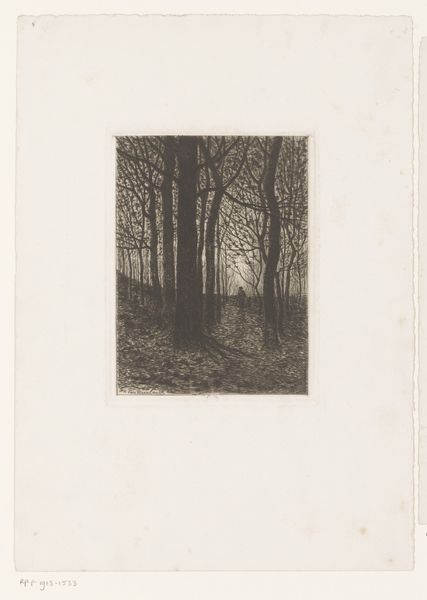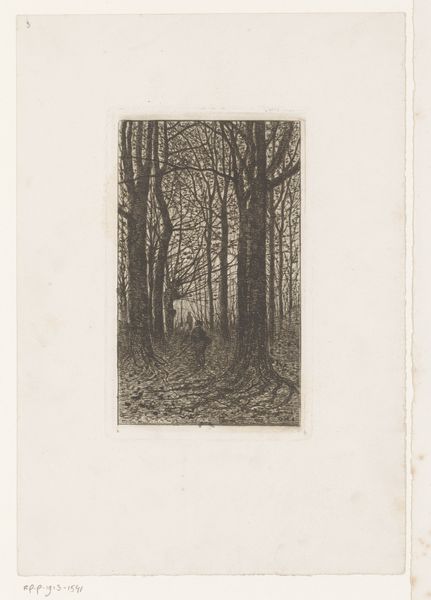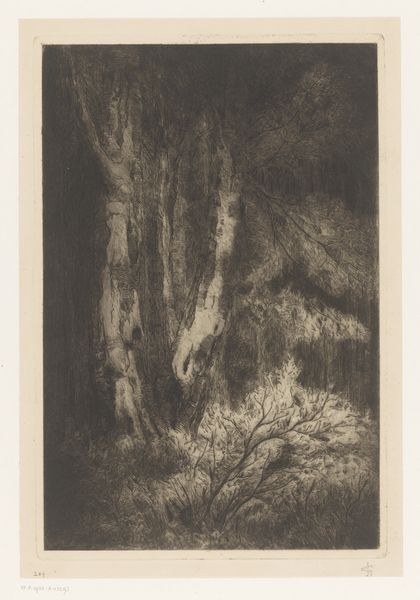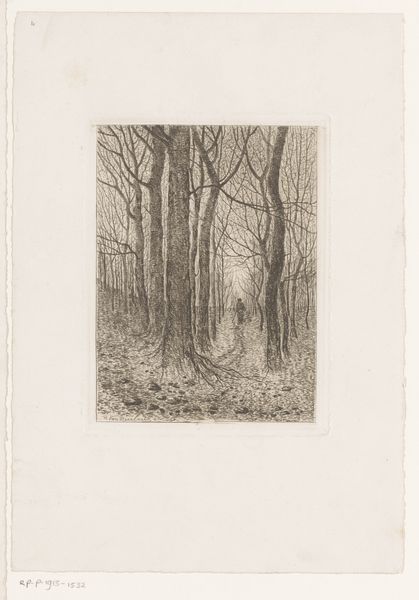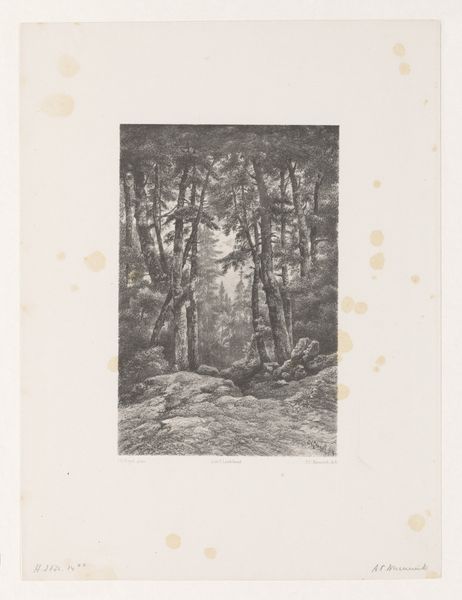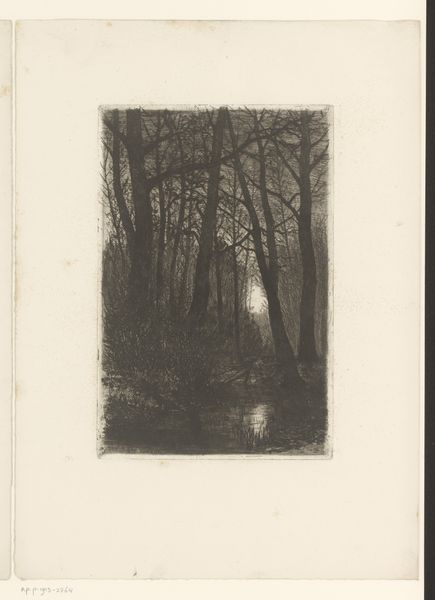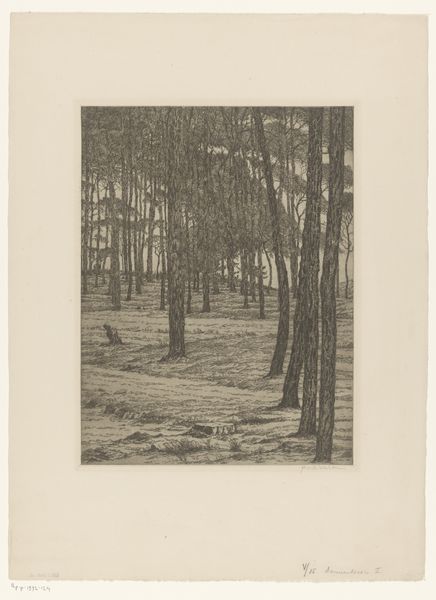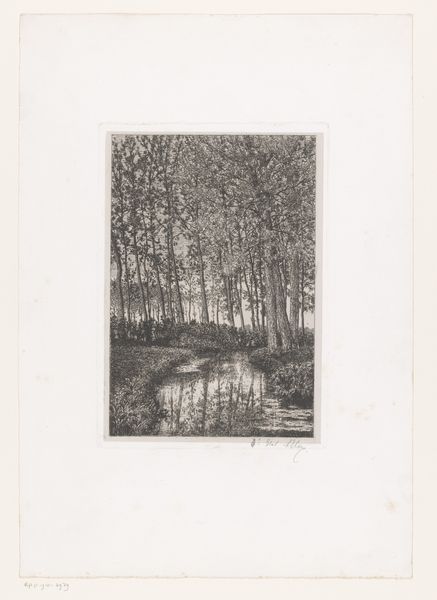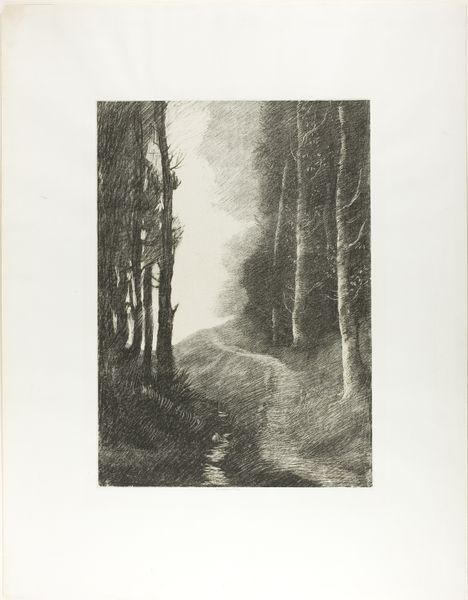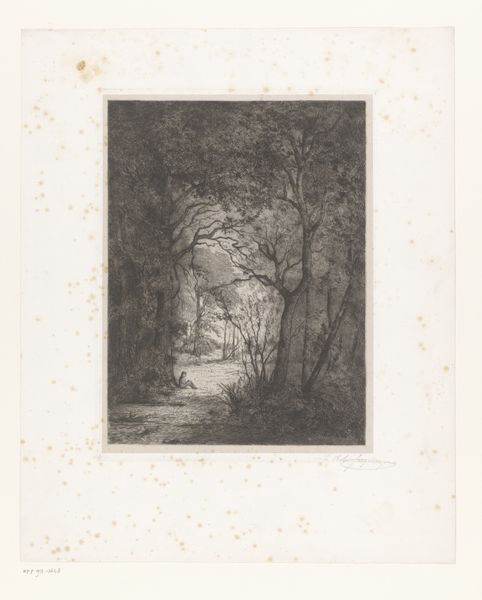
Dimensions: height 235 mm, width 166 mm
Copyright: Rijks Museum: Open Domain
Curator: Ah, yes, Emile Puttaert's, "Twee figuren lopen met zonsondergang in het Zoniënwoud," or "Two Figures Walking at Sunset in the Sonian Forest". It’s an etching, print and drawing; dated between 1839 and 1875. Editor: Immediately striking, isn’t it? That claustrophobic feeling of the dense trees, contrasted with the luminosity on the horizon… there's such drama and yet such stark stillness. Curator: Puttaert's relationship to the wood is clearly labor intensive: all those delicate, closely-worked lines to evoke the foliage and damp earth. Look closely and you will discern that, for its time, its manufacture represents a shift toward more widely accessible art through printmaking techniques, circulating imagery and democratizing consumption. Editor: And how fascinating that the title highlights not the forest itself, but the act of walking within it. Forests in this era symbolized both the sublime and the societal constraints imposed on the people, frequently visited and depicted at that time, often inspiring romantic or revolutionary emotions. Were these figures attempting an escape, maybe a rebellion against those norms? Curator: Maybe; and think also of the availability of materials for print production, influencing choices about scale and distribution, thus directing the number and nature of viewers or collectors. It shifts away from bespoke, upper-class works. Etchings and print drawings allowed for wider dissemination; affecting artistic reputation. Editor: It makes you think, who might have owned or viewed this print? Did it reinforce a romantic vision of nature for an urban dweller, or did it spark a different sentiment? Curator: Probably different. Its reception, inevitably bound to political considerations and questions of taste at a turning point in social production practices. How should value be assigned to such skill at crafting such a piece using materials so available and affordable, so easily distributed? Editor: It does leave us contemplating the intersection of nature, representation, and societal influence during the artist's time. Thank you for your view on the artist’s manufacturing context! Curator: Indeed. Thank you; my reflections on labor and its socioeconomic context offers yet another facet.
Comments
No comments
Be the first to comment and join the conversation on the ultimate creative platform.
